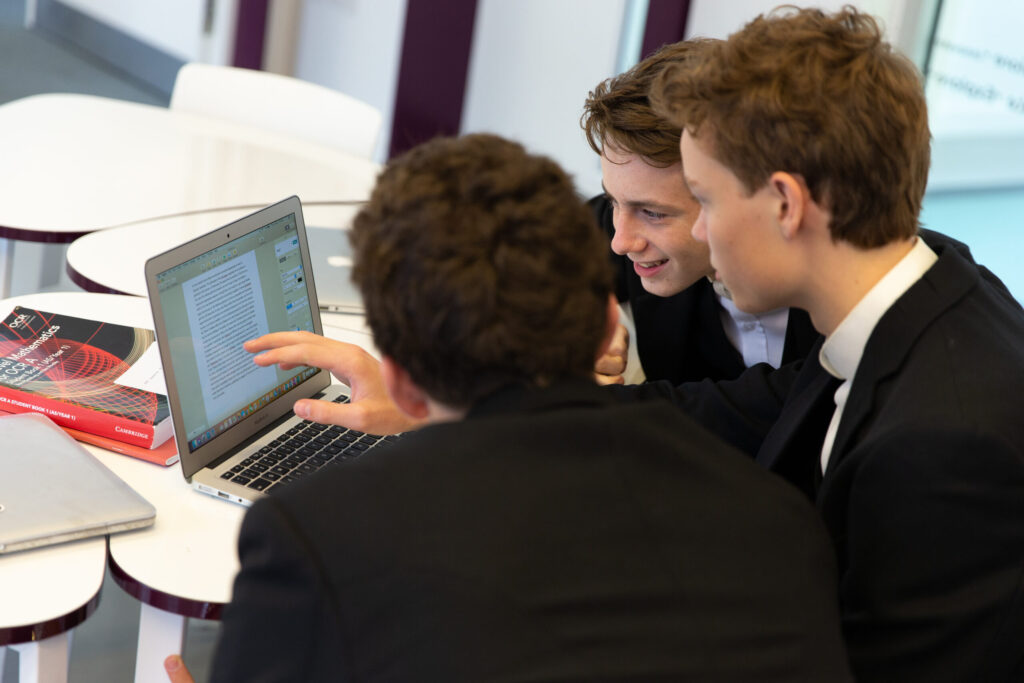This week’s blog post is based on Chapter Eight of Jared Cooney Horvath and David Bott’s book entitled 10 Things Schools Get Wrong: And How We Can Get Them Right. The chapter formed the basis of this week’s Teaching and Learning Reading Group, hosted here at Eton.
Horvath and Bott begin this chapter by referencing an experiment conducted by Duke University professor Dan Ariely[1]. The experiment involved participants performing the relatively mundane task of moving circles into squares. Some were paid 50c for their involvement, whereas others were paid $5. Those who were paid $5 moved approximately 159 circles over the course of 5 minutes. Those who were paid only 50c moved 101 circles on average in the same amount of time. This would seem to suggest that rewarding people can improve motivation and performance. However, there was also a third set of participants and this group were paid nothing for their involvement. This third set moved approximately 168 circles over in the 5 minutes; a significant increase when compared to the other two sets of participants. If we take this account, the experiment actually suggests that rewarding people could decrease their motivation and performance levels instead.[2]
This experiment builds upon early studies into human motivation, such as those by B. F. Skinner and Nathan Azrin. Skinner argued that free will is essentially illusory and human behaviour represents little more than a conditioned response to external stimuli.[3] He claimed that behaviours can be shaped into predictable ways using simple rewards and punishments. However, his most notable set of experiments relied upon using rats and not humans.[4]
The first set of experiments involving human participants were conducted by Nathan Azrin in the 1960s. Building upon Skinner’s work, Azrin’s 1968 study demonstrated that the behaviours of psychiatric hospital patients could be actively cultivated in a similar way to the behaviours of rats.[5] Patients were given metal tokens as a reward for performing favourable actions, such as washing dishes, and these could be exchanged for rewards such as extra outdoor time. The success of this ‘token economy’ model soon meant it was adopted by prisons, hospitals and schools around the world and still exists in various forms today.
If we apply this to a school context, this research seems to suggest that rewards could drive students’ specific behaviour. However, the research also suggests that this behaviour would revert back if the rewards system was taken away. In all six of Azrin’s experiments, when the established response reinforcement relation was discontinued, the patients’ performance levels fell to near-zero, something which has become known as the ‘extinction effect’.[6] Furthermore, other studies have found that behaviours rewarded in a token economy are rarely maintained in other contexts.[7] We can see this in education as a number of school-based studies have found that behaviour driven by certain rewards in one classroom, rarely transferred to other classroom settings.[8]
To make matters worse, other studies have found that when rewards were removed, performance levels fell even lower than they were before.[9] This is because rewards tend to create heightened expectations, and this triggers a performance crash when these expectations are not met. In psychology, this is commonly referred to as ‘behavioural contrast’ because the discontinuation of a rewards system essentially becomes a punishment.[10]
Research across a number of domains suggests that intervention programmes that incentivise behavioural change through rewards can at best produce mildly positive gains and at worst produce negative impacts in the long term.[11] This ‘undermining effect’ occurs because external or extrinsic rewards tend to undermine any internal or intrinsic motivators that would typically drive behaviour.[12]
This research leads Horvath and Bott to ask:
‘If rewards only work when they’re incessantly dispensed, fail to demonstrate generalisation, produce behavioural reversal when reduced, and undermine long-term performance and motivation, is there any justification for maintaining reward-based incentive systems in schools? Is there any reason to keep using certificates, aromatic stickers, grades, prizes and trophies?’
And their response? Compliance.
Most teachers use reward systems to open behavioural doorways. The objective is for students to then assume autonomy over the learning process as the extrinsically motivated behaviours become integrated into the students’ larger self-concept.[13] For example, they may begin choosing to do homework, not because it is compulsory but because it aligns with their identity.
The problem with this is that even if the behaviour does become integrated, it will never truly be intrinsically motivated, and nor will it inspire and drive the student as an intrinsic passion would. Nevertheless, as Ryan and Deci explain, behaviours can become integrated and then maintained as a result of a rewards system.[14] However, this is not because they are inherently interesting, satisfying or meaningful; they are maintained because after integration, there remains a sense of reward that is derived from the fulfilment of personal obligation and compliance.
Why is this a problem?
Although this may seem like a positive outcome, Horvath and Bott draw our attention to certain studies in neuroscience which have begun to map the brain and the circuitry associated with reward-driven behaviour.[15] Studies have found that when a reward is attached to certain behaviours or outcomes, this directly impacts on the future value computations processed within our ventromedial prefrontal cortex.[16] Therefore, when teachers use rewards to control student behaviour, we are shaping their neural representations of value.
This value system is also linked to our social and cultural values in practice. Rewards are never random, they reflect and transmit an underlying value system, and in schools teachers reward what is valued and students learn to value what teachers reward. Under this system, students come to believe that they need to value compliance and competition in order to succeed.[17]
Although this approach may work in a society where resources are scarce, such as food, water and shelter, we live in a society where these things tend to be in an abundance. If schools continue to use a scarcity mindset to underpin a competitive and extrinsically motivated incentive system, they are essentially advocating a way of thinking which prioritises short-term goals; transactional approaches to interactions; the accumulation and hoarding of knowledge and power; and the exploitation of advantage.[18] Horvath and Bott argue that schools need to evolve out of this way of thinking. When students stop battling over artificially limited ‘A’ grades, academic awards, and limited university places, competition and compliance become less important. Instead, there is a greater likelihood of skills developing, such as empathy, compassion, teamwork and meaningful innovation. As a result, students essentially develop intrinsic motivation, where learning is genuinely powered by a desire to contribute meaningfully to humanity.[19]
How can this be achieved?
Horvath and Bott offer some advice on how this shift to internal motivation might be achieved:
– Teachers should ensure that rewards are clearly linked to a desired behaviour and are not diffused amongst many behaviours.
– Teachers should encourage students to focus on the adaptive behaviour and not the reward itself.
– Rewards should be applied as quickly as possible after the desired behaviour has been observed so that students can make the connection.[20]
– However, rewards should not be given every time. If given intermittently, rewards can improve efficacy by reducing reward expectations.[21]
– Don’t make students compete for rewards as that way, there are no ‘winners’ or ‘losers’. This can help reduce peer resentment and relationship issues.
[1] D. Ariely & S. Jones, Predictably Irrational, (New York: Harper, 2008).
[2] J. Heyman & D. Ariely, (2004), ‘Effort for payment: A tale of two markets’, Psychological Science, Vol. 15(11), pp. 787-793.
[3] B. F. Skinner, (1985), ‘Cognitive science and behaviourism’, British Journal of Psychology, Vol. 76(3), pp. 291-301.
[4] B. F. Skinner, (1971), ‘Operant conditioning’, The Encyclopaedia of Education, Vol. 7, pp. 29-33.
[5] T. Ayllon & N. Azrin, The Token Economy: A Motivational System for Therapy and Rehabilitation, (East Norwalk: Appleton-Century-Crofts, 1968).
[6] D. J. Levis, Foundations of Behavioural Therapy, (New York: Taylor and Francis, 1970), p. 77.
[7] H. A. Filcheck & C. B. McNeil, (2004), ‘The use of token economies in preschool classrooms: Practical and philosophical concerns’, Journal of Early and Intensive Behavior Intervention, Vol.1(1), p. 94.
[8] D. S. Kuypers, W. C. Becker & K. D. O’Leary, (1968), ‘How to make a token system fail’, Exceptional Children, Vol. 35(2), pp.101-109.
[9] L. P. Crespi, (1942), ‘Quantitative variation of incentive and performance in the white rat’, The American Journal of Psychology, Vol. 55(4), pp. 467-517.
[10] ‘Behavioural Contrast’, American Psychological Society Online, Available at: https://dictionary.apa.org/behavioral-contrast Accessed: May 2022.
[11] E. L. Deci, R. Koestner & R. M. Ryan, (1999), ‘A meta-analytic review of experiments examining the effects of extrinsic rewards on intrinsic motivation’, Psychological Bulletin, Vol. 125(6), p. 627.
[12] E. L. Deci, R. Koestner & R. M. Ryan, (1999), The undermining effect is a reality after all—Extrinsic rewards, task interest, and self-determination: Reply to Eisenberger, Pierce, and Cameron (1999) and Lepper, Henderlong, and Gingras (1999).
[13] R. M. Ryan & E. L. Deci, (2000), ‘Self-determination theory and the facilitation of intrinsic motivation, social development, and well-being’, American Psychologist, Vol. 55(1), p. 68.
[14] E. L. Deci & R. M. Ryan, Toward an organismic integration theory. In Intrinsic motivation and self-determination in human behaviour, (Springer, Boston: Springer, 1985), pp. 113-148.
[15] B. Knutson et al., (2003), ‘A region of mesial prefrontal cortex tracks monetarily rewarding outcomes: characterization with rapid event-related fMRI’, Neuroimage, Vol. 18(2), pp. 263-272.
[16] S. L. Lim, J. P. O’Doherty & A. Rangel, (2011), ‘The decision value computations in the vmPFC and striatum use a relative value code that is guided by visual attention’, Journal of Neuroscience, Vol. 31(37), pp. 13214-13223.
[17] G. M. Kistruck et al., (2016), ‘Cooperation vs. competition: Alternative goal structures for motivating groups in a resource scarce environment’, Academy of Management Journal, Vol. 59(4), pp. 1174-1198.
[18] C. Roux, On the Psychological and Behavioral Consequences of Resource Scarcity, (Northwestern University: Doctoral Dissertation, 2014).
[19] E. L. Deci & R. M. Ryan, (2010), ‘Intrinsic motivation’, The Corsini Encyclopedia of Psychology, pp. 1-2.
[20] C. M. Browne et al., (2013), ’Delayed reinforcement–does it affect learning’, Journal of Veterinary Behavior: Clinical Applications and Research, Vol. 8(4), pp.e37-e38.
[21] C. B. Ferster & B. F. Skinner, Schedules of Reinforcement, (New York: Appleton Century Crofts, 1957).




